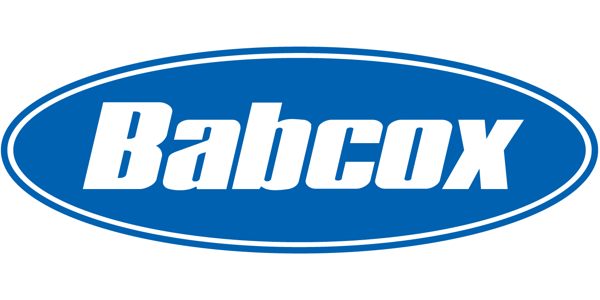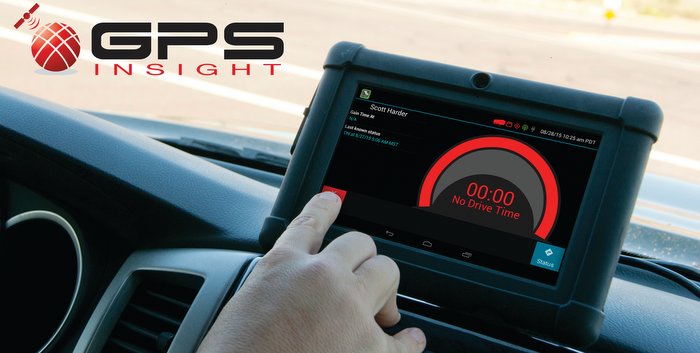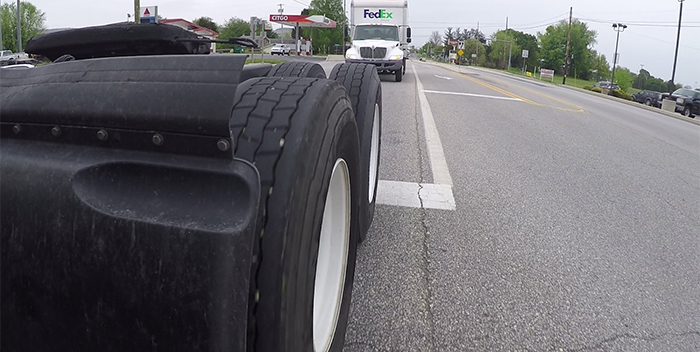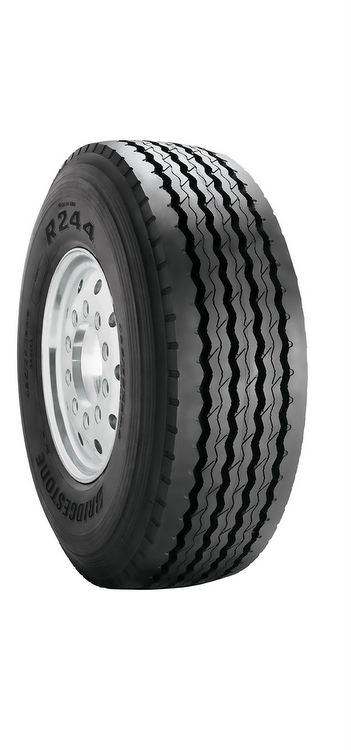The best way to keep operating costs down is to manage tires.
After fuel, tires are a fleet’s largest expenditure. Yet so many fleets tend to under-budget and under-manage this cost center. In fact, many fleets still treat tire management as an entry-level position and appoint the newest and least-experienced technicians to handle these expensive assets.
Importance of tire tracking
The whole objective of tracking tires is to be able to measure tire performance, according to Guy Walenga, engineering manager, Bridgestone/Fire-stone Inc. Fleets should be able to measure how tires and drivers are performing and how maintenance procedures and dealer maintenance are measuring up. These are the key factors for determining costs of operation.
“Based on tire tracking, fleets can make informed purchases,” says Walenga. “There are many ways to track tires. Some tire makers offer software, or there are other sources of management software, but fleets need to make sure, if they choose these, that the software provides places for them to record important information, such as tire size, maker, DOT number, tire pressure and tread depth information. I would suggest they stay away from programs that only allow the recording of the price of the tire, when it was purchased and when it was disposed of.”
Bridgestone/Firestone offers a different program, Tire Policy, which is customized to a fleet’s specific need for uniform tire maintenance. Walenga says a representative goes into the fleet location and helps the fleet and/or tire manager identify methods they wish to follow to purchase and maintain tires and to analyze performance. They can outline a program that defines what tires to use on specific wheel positions, the proper air pressure to maintain, when to pull tires, when and where to rotate tires and so on.
“We work with the fleet to identify its priorities and, once those are recorded, they are codified and become a working manual,” Walenga says. “Some fleets even choose to put the high points of the manual on wall posters. The manual is tire maintenance dependent to get the best maintenance and performance for the tires. We work with fleets to determine the best maintenance practices for their fleet in their operation.”
Walenga contends that the best tire maintenance program is not effective unless upper management supports it with a commitment to excellence and a sufficient budget.
“The quality of the program goes nowhere without the support and involvement of top management,” he says. “No fleet can manage tires properly without a good budget and adequate resources.”
Every tire management program relies on comprehensive record keeping, and that is best done with one individual who is dedicated to that responsibility, Walenga notes. Tire budgets are large, and tracking tires means dealing with data on tires, performance of different brands and a number of other variables that are more easily handled by one person, who is dedicated, trained and can manage tires without wasting resources. That means an individual who can keep good records, work with tire makers and tire dealers and talk with drivers about complaints.
A good tire management program always includes scrap-tire analysis. Walenga says scrap tires hold clues for how drivers are performing, how effective tire maintenance procedures are and how the dealer is doing. Checking tires for road-hazard failure can help fleets instruct drivers to operate trucks in a way that better protects tires.
Walenga points out that scrap-tire analysis can speak volumes about how a truck tire is maintained. Fleets can use scrap tires to check on alignment or mounting issues, as well as look for tires that end up prematurely out of service because of under-inflation or poor maintenance practices.
Dealers should be invited to participate in scrap-tire analysis, says Walenga. Often, fleets will find tires that could have been retreaded but weren’t. If a dealer is a part of that tire analysis, problems like this can be addressed. He also says that tire manufacturer representatives are usually available for scrap-tire analysis, as well.
Whether a fleet tracks 50,000 tires a year or 500, managers might find it easier to track a target group of tires as an interior test group. A smaller group of representative tires can provide good information that can give a snapshot of the total picture, and a test group can be easier to analyze.
Air pressure is No. 1 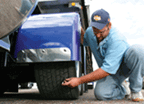
According to Doug Jones, customer engineering support manager at Michelin Americas Truck Tires, “The first thing fleets must have in place when developing a tire management program is a tire pressure maintenance program, which includes targeted pressures for the tires, periodic checks of air pressure, calibrated air-pressure gauges, a master gauge and trained employees willing to diligently check the pressures. If a fleet has nothing else but a good air-pressure maintenance program, it will reap substantial benefits.”
Fleets should track tires “from the cradle to the grave” to ensure that return on investment for the tires is maximized.
Michelin offers a variety of programs, including Michelin Business Solutions, which is contracted to manage a fleet’s tire maintenance program. In addition, the tire maker has developed and markets in-tire sensors and monitors, including the eTire System, to track tires and monitor tire pressure. The company also offers Bib Trax, a casing management program, plus various other programs customized to individual fleets to help them track their tires.
“Fleets should develop total tire management programs that include purchasing the best tires for particular applications and establishing how tires will be brought into a program,” says Jones. “A fleet needs to determine whether it will buy steer tires, run them down to a certain pull point and then retread them to replace them in the drive position. Or, will it buy steer tires and drives and retread them when they reach the determined pull point.”
The management program needs to include determining when tires should be inspected and pressures checked and appointing someone to check pressures, according to Jones. In addition, fleets need to establish a routine for tire rotation and vehicle alignment and institute a scrap-tire analysis program.
“Every tire that comes out of service should be examined to determine why,” he says. “To make a program work, it must include dedicated and trained personnel. Tire tracking is a must to determine and monitor cost per mile and compare performance of different tires to determine which tire is best for a particular application. A tire management program should be written, communicated, monitored and enforced.”
Set up goals
Curtis Decker, manager of field engineering for Continental Tire North America (CTNA), says that to ensure a successful tire management program, there needs to be a clear and concise primary target that the fleet is trying to achieve, based on current benchmark measurements. A tire program can be put in place to achieve a number of different goals. And, the goals should match the fleet dynamic so that the tire program is worth the time and effort. As an example, if a fleet specializes in just-in-time inventory logistics, the tire program’s primary target should be designed to minimize downtime and eliminate late load penalties.
Usually, tire programs are put in place to improve performance in four basic areas: minimize cost per mile over complete casing life, maximize fuel efficiency, minimize tire-related downtime and maximize durability under specific, extreme conditions.
“Realistically, a tire program will incorporate a mixture of all of the above, and this is where the problem originates,” says Decker. “If a fleet is placing equal importance on minimizing cost per mile and minimizing tire-related downtime, neither goal will truly be met. The two goals have intrinsic differences that interfere with each other. To be successful, a fleet would make one of the goals the primary target, and the second goal would then be used to provide direction when opportunity presents itself.
“At best, a fleet should actively engage in maximizing a tire’s benefit. Different tire programs will have different targeted benefits, but all need to make sure that individual factors are tracked with respect to total tire life,” Decker says. “Truthfully, every time a tire is touched, it adds cost to the overall life of the tire. Some are absolutely necessary, some are not. Here’s the crux: How can you control tire costs if you do not know the individual elements that add to your total tire benefit? You notice that I did not list total tire costs. With some of today’s tire programs targeting fuel efficiency, tire costs become difficult to model. Factors such as engine idling and ever-differing routes and schedules make if difficult to monitor the tire’s impact on fuel efficiency. Difficult, but not impossible. Other factors are easy to track, such as repairs, rotation requirements or early removal. So, look at total tire benefit, and try to model factors, such as improved fuel efficiency, reduced downtime and reduced driver fatigue.”
Not tracking these factors is the same as turning a blind eye to potential improvements.
“If you have no idea of your current costs/benefits, you may be missing out on improvements that your competition is using to their advantage,” Decker says. “Lastly, if your tire program is successful, a fleet will save money, not because that was the primary goal, but because the tire program is maximizing all aspects of the tire’s involvement.”
CTNA does not have a standalone package to offer fleets, as does some of its competitors. However, CTNA does have an internal program, called Contitrak, that provides its fleet sales managers (FSMs) with a mileage-based method to track a tire’s performance. This also keeps FSMs involved with the process as sources of information and advice. Each fleet has unique measurements and characteristics that best fit its own needs. By keeping the CTNA people involved as part of the process, both the fleet and CTNA stand to benefit, as the tire’s overall performance is maximized.
Scrap-tire analysis is one of the easiest and most visual, methods to recognize problems/opportunities in a fleet’s tire program, says Decker. And, it should include an audit of tires to be retreaded. Tires subject to early removal stand out in a scrap analysis because of the visual impact of the remaining tread. Tires involved in a misapplication will show up due to their repeated presence in a scrap analysis. Problems with a tire program tend to show up in a scrap analysis because managers begin to question why certain failures occur at higher levels.
Handling tires will provide insight into overall performance that numbers on paper simply cannot communicate.
“I recently attended a scrap analysis in which the majority of out-of-service tires were impact related, across all manufacturers, mainly trailer tires,” says Decker. “The fleet ran standard loads over improved roads, but the level of impacts seemed abnormally high. Speaking with the maintenance manager, I found out that the inflation target for the fleet was 20 PSI higher than the T&RA recommendations for loading of the tires. The maintenance manager did this as an increased safety factor to make sure that his tires were not under inflated. Unfortunately, the overall effect was that his casings were inflated to the point of being over sensitive to any curbing, pothole, etc. His out-of-service rate was still higher than necessary, but the most common failure was impact break, as opposed to failures relating to under inflation. With inflation, a sweet spot exists, and this particular scrap analysis showed that the fleet was at the upper end of the inflation window.”
Decker said that, when it comes to managing tires, “Proactive beats reactive 95 percent of the time; that other 5 percent keeps you on the learning curve.”
Tire management: Maximizing ROI
The realization that a major operational budget item is actually an asset that needs to be properly managed is critical if you want to maximize the return on your tire investment.
Due to the competitive nature of the trucking industry, the level of sophistication of fleet owners and fleet managers has increased at a rapid pace in the past decade.
Today, it is imperative to understand that the tires your fleet rolls on are not commodities, and the lowest initial purchase price is not a sound reason for making tire purchasing decisions.
First and foremost, it is important to understand that, when you make a tire purchase, you will only enjoy about a 30 percent return on your investment by the time the original tread is worn off the casing.
To recover the rest of that tire investment, progressive fleets look to multiple retreadings of quality casings.
A sound tire management effort is the best way to make sure your casings are properly maintained so they can deliver multiple retread lives.
A quality tire supplier can assist you in establishing a tire management program and tracking the performance of your tire assets.
It is therefore imperative that, when you select a local tire supplier, you look to a strong independent dealer that has the capabilities to provide you not only with quality new and retread tire products, but with service, programs and the information necessary to manage those assets.
If your fleet travels long distances, you might also want to look at the coverage you can rely on, regardless of where your trucks must go.
An independent Bandag dealer is a good choice for several reasons, the company says.
The Bandag Strategic Alliance is a service network of independent tire dealers with 1,600 sales and service locations across North America.
These independent dealers can provide you with a variety of first-tier new truck tires as well as some second-tier options. They also feature Bandag retreads, which have a reputation for wear performance and reliability.
Of course, quality products alone will not result in a comprehensive tire management effort.
Service is another key part of a comprehensive tire management program. With the Strategic Alliance, you can get a vast array of services, from mounted wheel programs and tire ready racks to yard checks and emergency road service.
Good, sound information is perhaps the most important element in a successful tire management effort. Members of the Strategic Alliance have access to Bandag’s BASys Fleet Analyzer (BFA) software.
The BASys data-gathering capability provides a fleet with timely, consolidated reports on tire performance, whether that fleet requires only one dealer or 15 members of the Strategic Alliance for its tire program, the company says.
With meaningful data, fleet managers can make critical decisions that impact uptime and the operations budget.
Even minor adjustments in a tire program, like changing pull points by 1/32nd or increasing air pressure checks, can mean thousands of dollars to a fleet, if those adjustments result from accurate data about the fleet’s tire performance.
Making tire management decisions without that data is like trying to manage your fleet without a business plan. This is a very competitive industry, and few can count on good fortune for success. Today, you don’t have to count on luck alone. Tire suppliers like Bandag have honed their capabilities far beyond products to help you make the management decisions that result in success.
More savings with aluminum wheels
Fleets can cut wheel maintenance costs by specifying aluminum wheels. Alcoa Wheel Products’ Dura-Bright aluminum wheels resist corrosion and eliminate the need for polishing or heavy cleaning. Initially made available in 1999 in the transit bus industry, Dura-Bright wheels offer a high-quality shine with a spray of soap and water, the company said. Dura-Bright surface treatment option is now available for an expanded number of wide-base wheel applications, including Alcoa’s 14-in. aluminum wheels.
Applications such as utilities, construction, bulk haulers, truckload carriers and refrigerated transporters are realizing significant fuel and weight savings by switching to wide-base wheels, according to Victor Marquez, director of marketing, commercial vehicle wheels for Alcoa Wheel Products.
“Expanding the Dura-Bright surface treatment’s availability to our wide-base wheel product line is in direct response to growing customer demand for the product,” Marquez said. “Not only are fleets looking for fuel and weight savings, but also they want a bright, shiny, aluminum wheel that is easy to clean and maintain.”
In addition to cleaning and maintenance issues, Alcoa Dura-Bright wheels exhibit all the other advantages of aluminum wide-base wheels, including one-piece, forged-in strength; better heat dissipation for extended tire and brake life; less weight for increased payload and greater fuel efficiency; and higher resale value, the company says.
At 71 lbs., the Alcoa 14-in. wheel carries a 12,800-lb. maximum load rating. Switching from steel duals to an Alcoa wide-base wheel and tire assembly saves 318 lbs. per axle – up to 1,272 lbs. per tractor and tandem axle trailer, the company says. They are available with different offsets for a variety of vehicle configurations.
For those fleets that are choosing wide-base singles to better control tire costs, Alcoa has broadened its wide-base aluminum wheel product line to include a variety of mounting styles. Originally available in 10-hole hub piloted mounting assembly, the company now offers its 22.5- by 14-in. wide-base aluminum wheels in 10-hole stud located (ball seat mounting) and 8-hole hub piloted mounting, each with 2-in. offsets, and a zero offset 10-hole hub pilot mounting version, as well.
“Alcoa expanded its wide-base wheel product line in recognition of the industry’s growing acceptance of the benefits of wide-base wheel and tire assemblies versus dual wheels and tires,” said Marquez. “Fleets using wide-base tires in conjunction with the Alcoa wide-base wheel have experienced significant benefits in fuel efficiency, maintenance costs and additional payload.”
Alcoa says that some of the benefits of the 14" wide base are:
• lighter weight wheels;
• 3 to 7 percent fuel savings possible;
• load rating of up to 12,800 lbs. allows for heavier payloads;
• easier maintenance with fewer wheels and no inside duals;
• requires lower PSI for better pavement life, ride comfort and stability;
• 4 drive/trailer wheels versus 8 drive/trailer wheels;
• no inner duals to check;
• valve stems easily accessible without inner duals;
• visual identification of underinflation easier without inner duals; and
• better accessibility to vehicle for inspection.
Significant savings can even result from replacing aluminum dualed wheels with this new wide-base wheel and tire combination.
A set of dualed wheels and tires has four flexing sidewalls, compared to two for a wide-base system. Due to the fact that wide base tires have half as many flexing sidewalls and are manufactured with special compounds that reduce rolling resistance, some fleets have experienced fuel savings up to 7 percent, Alcoa says.

